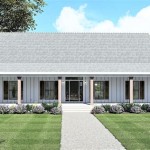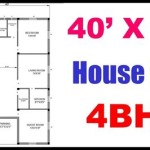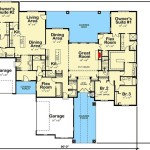Modern House Plans On Stilts: Design, Benefits, and Considerations
The architectural landscape is constantly evolving, with innovative designs emerging to address various environmental and lifestyle needs. One such design, the modern house plan on stilts, is gaining traction due to its unique aesthetic appeal and practical advantages. These elevated structures, also known as pile dwellings or pier and beam houses, offer a distinct departure from traditional ground-level construction, providing solutions to challenges presented by uneven terrain, flooding, and environmental concerns. This article explores the various aspects of modern house plans on stilts, including their design principles, benefits, and crucial considerations for prospective homeowners and builders.
The concept of building houses on stilts is not new. It has been employed in various cultures throughout history to protect dwellings from floods, pests, and wild animals. However, modern adaptations have transformed these functional structures into architectural statements. Contemporary stilt houses often feature sleek lines, open floor plans, and generous use of glass, integrating seamlessly with the surrounding environment. The stilts themselves are no longer merely structural supports but become integral design elements, contributing to the overall aesthetic.
Adaptability to Challenging Environments
One of the primary advantages of house plans on stilts is their adaptability to challenging environments. Regions prone to flooding, landslides, or unstable soil conditions can benefit immensely from this type of construction. By elevating the living space above the ground, the structure is protected from potential water damage during floods. This is particularly crucial in coastal areas or riverine settlements where flooding is a recurring threat. Furthermore, stilts can mitigate the risk of damage caused by landslides, as the elevated foundation distributes the weight of the house more evenly, reducing stress on the underlying soil.
Houses on stilts are also advantageous in areas with uneven or sloping terrain. Instead of requiring extensive excavation and grading to create a level building site, stilts can be used to adjust the height of the house, allowing it to conform to the natural contours of the land. This minimizes the environmental impact of construction and preserves the existing landscape. In regions with unstable soil, deep-driven pilings can provide a solid and secure foundation, even when the ground beneath is prone to shifting or compaction.
Beyond environmental considerations, stilt houses can also offer practical benefits in areas with high pest populations. Elevating the house reduces the likelihood of pests, such as rodents and insects, entering the living space. The open space beneath the house can also be used for storage, parking, or even recreational activities. The improved ventilation in this open space can help to regulate the temperature of the house, reducing the need for air conditioning in warmer climates.
Design and Aesthetics
Modern house plans on stilts offer a wide range of design possibilities, from minimalist and contemporary styles to more rustic and traditional aesthetics. The key is to integrate the stilts seamlessly into the overall design, making them a visual feature rather than a mere structural necessity. The choice of materials for the stilts themselves can significantly impact the overall look of the house. Steel stilts offer a clean, modern appearance, while wooden stilts can evoke a more natural and rustic feel. Concrete stilts are durable and versatile, suitable for a variety of architectural styles.
The design of the house above the stilts can be as diverse as any other type of construction. Open floor plans, large windows, and outdoor living spaces are common features, maximizing natural light and ventilation. Balconies and decks are often incorporated to take advantage of the elevated views and create a seamless connection between the indoor and outdoor environments. The space beneath the house can be utilized in various ways, depending on the needs and preferences of the homeowner. It can be left open to create a covered outdoor area, enclosed to provide additional storage or living space, or even landscaped to create a garden.
The aesthetic appeal of a house on stilts is often enhanced by its unique perspective. The elevated position offers panoramic views of the surrounding landscape, creating a sense of privacy and seclusion. The house can also be designed to minimize its impact on the environment, blending seamlessly with the natural surroundings. The use of sustainable materials, such as reclaimed wood and recycled steel, can further enhance the eco-friendliness of the design. Thoughtful landscaping can complement the architectural style of the house, creating a harmonious relationship between the built environment and the natural world.
Construction Considerations and Costs
Constructing a house on stilts involves unique engineering and construction challenges that must be carefully considered. The foundation system, including the design and placement of the stilts, is crucial for the stability and safety of the structure. A qualified structural engineer should be consulted to ensure that the stilts are adequately sized and spaced to support the weight of the house and withstand wind loads, seismic activity, and other environmental factors. The type of soil and the depth of the pilings are also important considerations, as they directly impact the stability of the foundation.
The construction process for a house on stilts typically involves several stages. First, the stilts are installed, followed by the construction of the platform or floor structure that will support the house. The house itself is then built on top of the platform, using conventional construction methods. The connections between the stilts and the house must be carefully designed and executed to ensure that the structure is properly anchored and can withstand lateral forces. The utilities, such as plumbing and electrical wiring, must also be carefully routed to accommodate the elevated position of the house.
The cost of building a house on stilts can vary depending on several factors, including the size and complexity of the design, the materials used, and the location of the building site. In general, the cost of constructing a house on stilts is likely to be higher than the cost of building a traditional ground-level house, due to the additional engineering and construction required for the foundation. However, the long-term benefits of a stilt house, such as reduced flood risk and improved ventilation, can offset the initial cost. Furthermore, the unique aesthetic appeal and the potential for increased property value can make a house on stilts a worthwhile investment.
Building codes and regulations related to stilt houses can vary depending on the local jurisdiction. It is essential to consult with local authorities to ensure that the design and construction of the house comply with all applicable codes and regulations. Permitting requirements, setback restrictions, and height limitations may apply, and it is important to obtain all necessary approvals before commencing construction. Some jurisdictions may also have specific requirements for the design and construction of stilt foundations, particularly in areas prone to flooding or seismic activity. Compliance with these codes and regulations is crucial for ensuring the safety and durability of the house.
In conclusion, modern house plans on stilts offer a compelling solution for a variety of environmental and lifestyle challenges. Their adaptability to challenging environments, their aesthetic appeal, and their potential for cost savings make them an increasingly popular choice for homeowners and builders. However, it is essential to carefully consider the engineering and construction challenges involved, consult with qualified professionals, and comply with all applicable codes and regulations to ensure that the house is safe, durable, and functional.

House Design Plan Ch539 3 Stilt Plans On Stilts Carriage

Home Plan Ch546

Pin By Erik Brian On Home Design Stilt House Plans Stilts Affordable Village

Beach House Floor Plans Coastal Carriage

House Design Plan Ch462 8 On Stilts Elevated Plans Coastal

Modern Resort Type House With Stilt Concept Pinoy Eplans

Home Plan Ch539

Elevated House Plans Small Beach

Home Plan Ch464

Stilt Houses 10 Reasons To Get Your House Off The Ground








